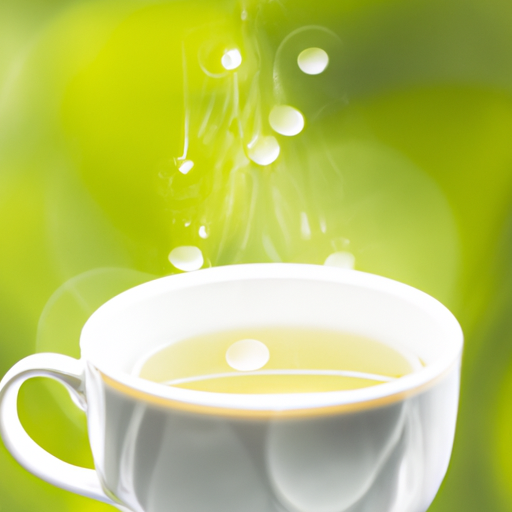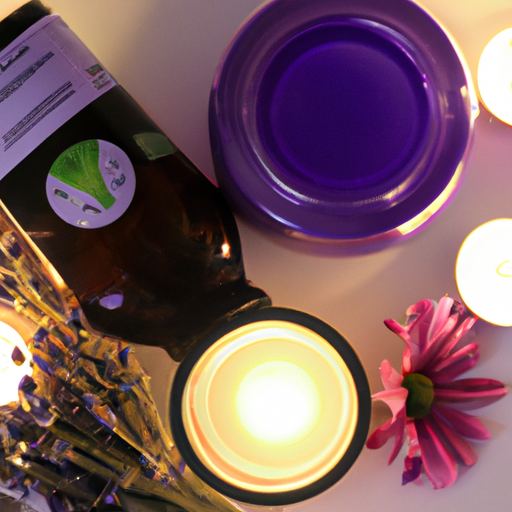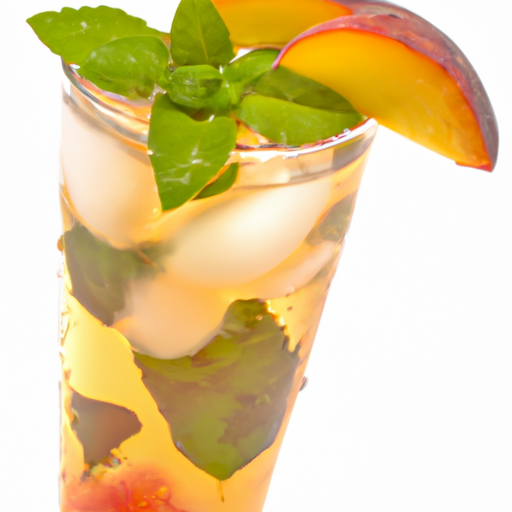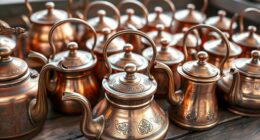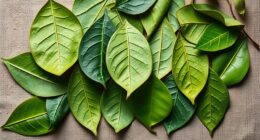Did you know that decaffeinated tea is made by extracting caffeine from tea leaves, so that you can still enjoy the benefits of tea without the energizing effects of caffeine? It’s true! Decaffeinated tea is a great option for those seeking the cognitive benefits of tea without the side effects of caffeine such as jitters or a racing heart.
There are three main methods used to remove caffeine from tea: Carbon Dioxide, Ethyl Acetate, and Methylene Chloride. Each method has its own advantages and disadvantages, but all aim to extract caffeine while preserving the other beneficial compounds found in tea, such as L-theanine.
Decaffeinated tea still contains a small portion of caffeine, so it’s important to keep that in mind if you are sensitive to caffeine or are trying to eliminate it from your diet completely. However, the amount of caffeine in decaffeinated tea is significantly lower compared to regular tea.
In this article, we will explore the science behind decaffeinated tea, including the different methods used to remove caffeine and the health benefits it can offer. So grab a cup of decaffeinated tea and let’s dive into the fascinating world of caffeine-free tea!
Key Takeaways
- Decaffeinated tea is produced to remove caffeine from Camellia sinensis leaves.
- There are three main methods used to remove caffeine from tea: Carbon Dioxide, Ethyl Acetate, and Methylene Chloride.
- Decaffeinated tea still contains a small portion of caffeine.
- Herbal teas and blends are naturally caffeine-free and do not go through decaffeination.
Decaffeinated Tea Production
I will explain the three main methods used to remove caffeine from tea leaves: Carbon Dioxide, Ethyl Acetate, and Methylene Chloride.
Decaffeinated tea is becoming increasingly popular in the market as more consumers are becoming conscious of their caffeine intake. There are various reasons why people choose decaffeinated tea, including health concerns, sensitivity to caffeine, and personal preferences.
The Carbon Dioxide method involves using high-pressure carbon dioxide to extract caffeine while leaving other compounds intact. Ethyl Acetate, a common solvent, is used to remove caffeine and polyphenols from tea leaves. Methylene Chloride is another solvent that can effectively extract caffeine.
These methods are carefully regulated to ensure that the final decaffeinated tea product meets quality and safety standards. Understanding these different methods allows consumers to make informed choices about the decaffeinated tea they prefer.
Caffeine Removal Methods
One common method for removing caffeine from tea is through the use of carbon dioxide. This method involves exposing the tea leaves to pressurized carbon dioxide, which acts as a solvent to extract the caffeine. The carbon dioxide is then evaporated, leaving behind decaffeinated tea leaves.
This method is preferred because it’s a natural process that doesn’t use any harsh chemicals.
Benefits of decaffeinated tea include the reduction of caffeine-related side effects such as increased heart rate and jitteriness. It allows individuals who are sensitive to caffeine to still enjoy the flavor and health benefits of tea without the stimulating effects.
For those looking for caffeine-free alternatives, herbal teas and blends are a great option. These teas are naturally caffeine-free and don’t go through the decaffeination process. They offer a variety of flavors and health benefits, making them a popular choice among tea enthusiasts.
Health Benefits
Among the various advantages of enjoying decaffeinated tea, it’s worth mentioning the positive impact it can have on one’s overall well-being. Decaffeinated tea provides a caffeine-free alternative to regular tea, allowing individuals to still enjoy the taste and benefits of tea without the stimulating effects of caffeine.
Research has shown that decaffeinated tea can help improve sleep quality, reduce anxiety, and promote relaxation. It has also been found to have antioxidant properties, which can help protect against oxidative stress and inflammation in the body.
Additionally, decaffeinated tea still contains beneficial compounds such as L-theanine, which can enhance mental focus and concentration. With these health benefits, decaffeinated tea is a great choice for those looking to decrease their caffeine intake while still enjoying the soothing and refreshing qualities of tea.
Frequently Asked Questions
Are all types of tea decaffeinated using the same methods?
No, not all types of tea are decaffeinated using the same methods. Different methods for decaffeinating tea include Carbon Dioxide, Ethyl Acetate, and Methylene Chloride. The factors that affect the caffeine content in decaffeinated tea vary as well.
Can decaffeinated tea still provide the same health benefits as regular tea?
Decaffeinated tea can still provide potential health benefits similar to regular tea. It contains L-theanine, which helps to balance the effects of caffeine. Compared to other decaffeinated beverages, decaf tea retains more beneficial compounds.
How is the caffeine content in decaffeinated tea regulated?
Regulation of caffeine content in decaffeinated tea is achieved through various caffeine removal techniques in tea processing. Common methods include Carbon Dioxide, Ethyl Acetate, and Methylene Chloride. These techniques help remove caffeine while preserving other beneficial compounds in tea.
Are there any potential risks or side effects associated with decaffeinated tea?
Decaffeinated tea has minimal health risks, but long-term effects are still being studied. A friend once experienced digestive issues after drinking decaf tea, but these cases are rare. It’s important to monitor personal tolerance and consult a healthcare professional if concerned.
How does the taste of decaffeinated tea compare to regular tea?
Decaffeinated tea tastes slightly different from regular tea due to the removal of caffeine. Factors affecting the taste include the decaffeination method used, the quality of the tea leaves, and the brewing process.
Conclusion
In conclusion, decaffeinated tea is a great option for individuals who want to enjoy the benefits of tea without the stimulating effects of caffeine. The production of decaffeinated tea involves various methods such as Carbon Dioxide, Ethyl Acetate, and Methylene Chloride extraction. These methods effectively remove caffeine while still preserving the beneficial compound L-theanine.
Interestingly, studies have shown that decaffeinated tea can still contain a small amount of caffeine, with an average of 1-2 milligrams per cup. This statistic highlights the meticulousness of the decaffeination process and emphasizes the importance of choosing decaffeinated tea for those sensitive to caffeine.


